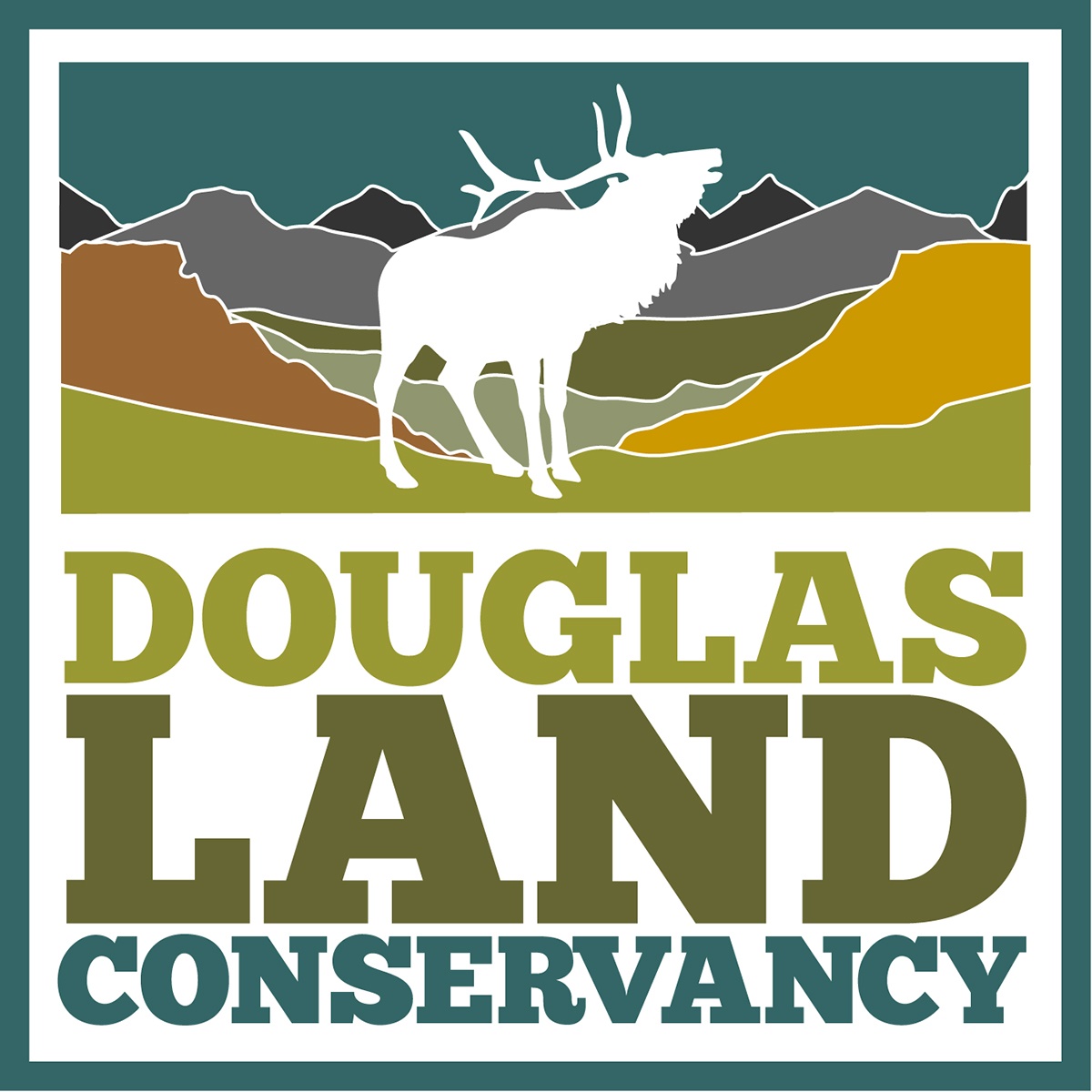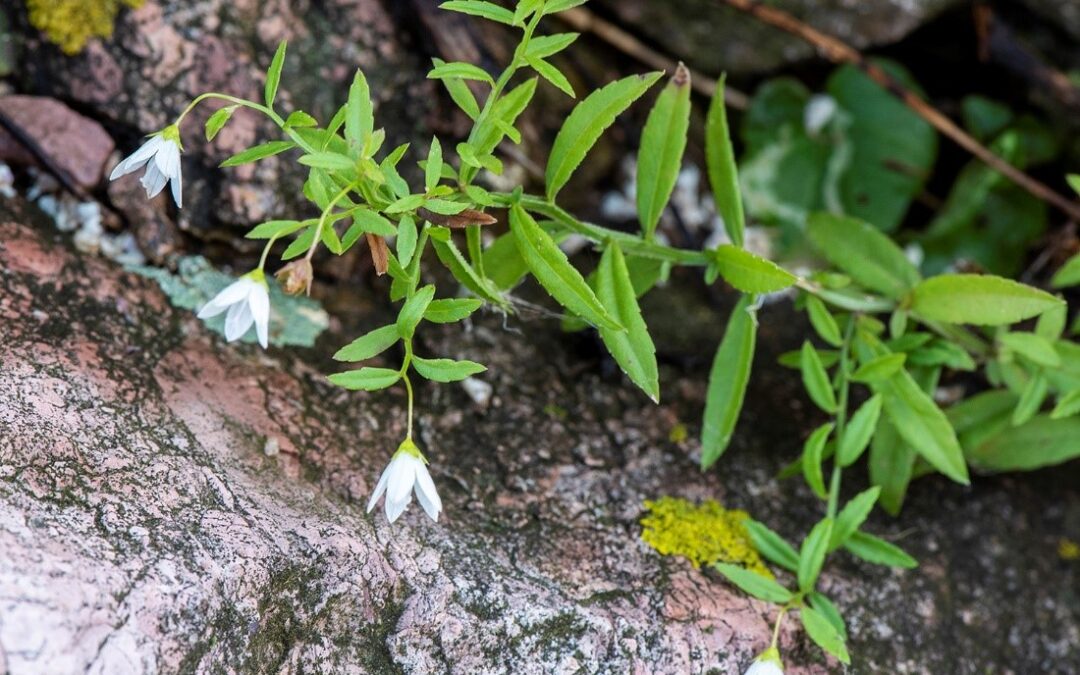Campanula aparinoides, the marsh bellflower or bedstraw bellflower
By Elizabeth Taylor
On the morning of August 3, 2018, three amateur plant enthusiasts—Barb Harbach, Cathy Fischer, and I—were inventorying plant species along the bank of Gove Ditch in Sandstone Ranch, Douglas County’s newest open space. We were participating in the Sandstone Ranch Natural Resource Inventory project. The day was beautiful, and our survey efforts were going well. Among the numerous water-loving species we observed, we were pleased to find several that were not yet on our Sandstone Ranch plant inventory list, including marsh skullcap (Scutellaria galericulata), mountain sneezeweed (Helenium autumnale), water crowfoot (Ranunculus aquatilis), coon’s tail(Ceratophyllum demersum), common duckweed (Lemna minor), and tall manna grass (Glyceriaelata). Although none of these plants are uncommon in Colorado, I list them here to provide you with an idea of the marshy, stream-side habitat.
As I leaned over to look more closely at a marsh skullcap close to the water’s edge, a low growing plant stuck to my pant leg from behind. At first I thought that it might be a bedstraw such as stickywilly or cleavers (Galium aparine), one of four species of bedstraws we had found so far on the ranch. However, as I reached down to brush the plant off my clothing, I was startled to discover that it was an unfamiliar plant clinging to me and demanding my attention. Several similar plants were prawling in tangled masses and climbing on nearby vegetation. Upon further examination, I saw that the small plants with the narrow, alternate, sticky leaves and tiny, white, bell-shaped flowers resembled a miniature Campanula, but not one whose acquaintance I had made previously. BarbHarbach and I keyed out the plant using both Jennifer Ackerfield’s Flora of Colorado (2015) andColorado Flora: Eastern Slope, Fourth Edition (2012) by William A. Weber and Ronald C. Wittmann.
We were fairly certain that our new-found friend was Campanula aparinoides, the marsh bellflower or bedstraw bellflower. However, the keys we were using caused us to have an element of doubt. Weber writes on page 150 that the plant is “extremely rare” in Colorado and that it was “collected by Parryin northern South Park in 1861, and once in the Denver area by Eastwood.” Ackerfield notes on page 261 that the plant is “rare in moist meadows and along streams, known from 2 very old collections in Colorado along the South Platte.” She says that it is “possibly extirpated from Colorado.” She goes on to provide the following details:
“The first collection of this species in Colorado was made by Hall and Harbour in 1862, labeled as collected in South Park but probably collected along the Platte as South Park would be out of range and habitat for this species. The other collection was made by Alice Eastwood sometime prior to 1893 for her Popular Flora of Denver. Eastwood notes that this was found several years ago near Smith’s Bridge along the Platte in Denver but hasn’t been seen since. These collections may represent separate forms of C. rotundifolia, which rarely can have pale blue or white flowers. If these collections are of C. aparinoides, then this species is apparently extirpated from Colorado.”
Three days later, Barb and I returned to the area accompanied by Curt Frankenfeld, another volunteer naturalist, who photographed the plant for us. We carefully keyed it out again and also checked other references from locations outside of Colorado. At last we were certain that our initial identification was correct. I collected several specimens and sent them to Loraine Yeatts at the Denver Botanic Gardens Kathryn Kalmbach Herbarium for verification. In addition, Loraine came to SandstoneRanch to view the plants in person. She confirmed our identification and submitted one of the specimens to the Herbarium. The record of the acquisition, along with a photograph of the specimen, is can be viewed in SEINet at http://swbiodiversity.org/seinet/collections/individual/index.php?occid=20503009&clid=0. Loraine also sent specimens to Ackerfield and Weber. We are indebted to Loraine for her kind assistance. The marsh bellflower is again a known flower in Colorado!
About Sandstone Ranch
In January 2018, Douglas County purchased Sandstone Ranch, its newest open space property.Sandstone Ranch is a beautiful 2038-acre ranch with a wide diversity of ecological zones and habitats, as well as red rock formations and historical and cultural assets. The property is considered to be the “crown jewel” of Douglas County’s open spaces by many people who have visited. It is located along the foothills between Denver and Colorado Springs, just south of the Perry Park community. The property is currently closed to the public while Douglas County Division of OpenSpace planners work on its Master Plan, which will define how the ranch is to be developed for public use, while also ensuring valuable natural resources are conserved and protected. To read more about the property and follow the status of the Master Plan, go tohttps://www.douglas.co.us/dcoutdoors/openspace-properties/sandstone-ranch/.
Sandstone Ranch Natural Resource Inventory
In March 2018, Douglas County Open Space volunteer naturalists initiated the Sandstone RanchOpen Space Natural Resource Inventory project to provide information to assist the planners in decision making as they develop the Master Plan. Jackie Sanderson, Natural Resource Specialist for Douglas County Division of Open Space and Natural Resources, coordinated the field surveys and facilitated access to the ranch. Each week, volunteer naturalists inventoried animal and plant species in nine designated zones that encompass all habitat types within Sandstone Ranch. A volunteer team including CoNPS members and Colorado Native Plant Masters® was responsible for surveying the plants on the property. In addition, the CoNPS field studies committee sponsored two half-day plant inventories, and species observed during those events were incorporated into the overall SandstoneRanch plant list.
In mid-October, 2018, volunteer naturalists developed a report including lists of the plants and animals observed on each zone of the ranch, the general ecology of the habitats present, and identification of areas inhabited by sensitive species. The report was presented to the Douglas County Open Space Advisory Council and Douglas County Division of Open Space and Natural Resources staff members at a November 1, 2018 meeting. Volunteer naturalists are continuing surveys of plant and animal species on the ranch to support educational activities as well as ongoing decision making.

DLC Board Member and Volunteer Naturalist
Elizabeth Taylor’s father was a botany professor for over 40 years, but much to his dismay, she pursued college degrees in zoology, wildlife management, and technical communication and worked in those fields. It was not until she retired seven years ago that she finally started following in hi sfootsteps and became a Native Plant Master® and NPM instructor. She will be co-teaching an NPM class at Sandstone Ranch in May 2019.
This article is reproduced with permission from AQUILEGIA: Newsletter of the Colorado NativePlant Society, Vol. 43 No.1 Winter 2019.

